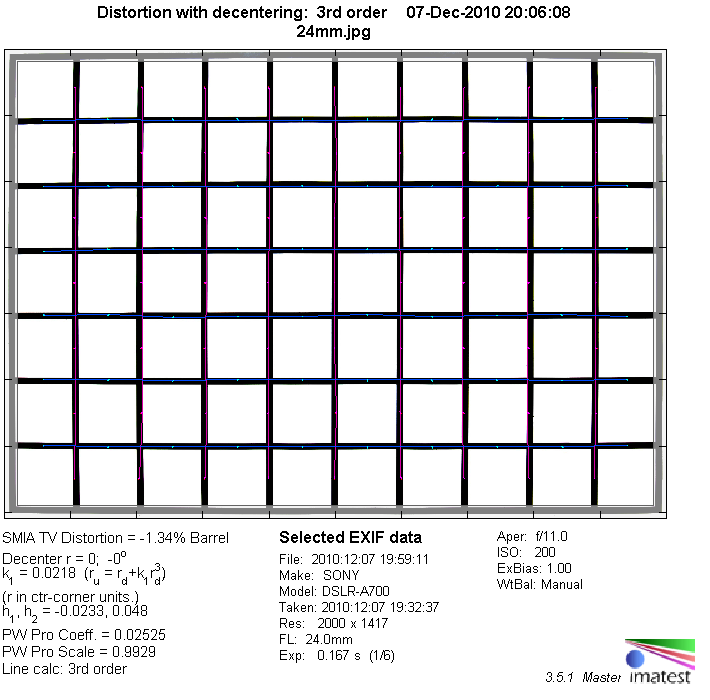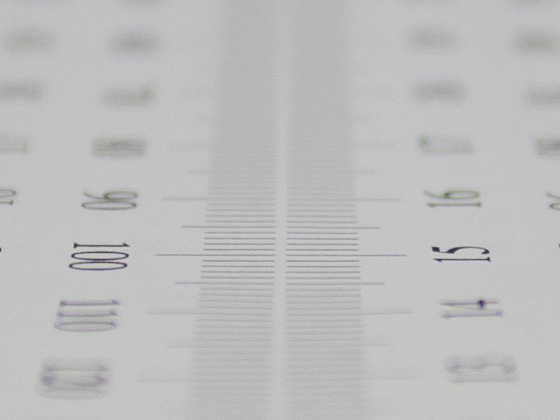|
Zeiss Distagon T* 24mm f/2 ZA SSM (SAL-24F20Z) - APS-C Review / Lab Test - Analysis |
|
Lens Reviews -
Sony Alpha/NEX (APS-C)
|
|
Page 2 of 2

Distortion
The Distagon produces a slight to moderate amount of barrel distortion (~1.3%). This may be just visible in certain situations but it's generally not an issue in field conditions.

Vignetting
Light falloff is usually not a major problem when using a full format lens on an APS-C DSLR but the Zeiss lens is both comparatively wide and fast which makes things a little more difficult here. At f/2 the amount of vignetting isn't really extreme but still often noticeable at ~0.85EV (f-stops). The issue is pretty much negligible from f/2.8 onwards.

MTF (resolution)
The Zeiss lens delivers a rare level of perfection within the APS-C testing scope. It doesn't really get any better than this by today's standards. The lens is ultra-sharp across the image frame straight from f/2 and all the way up to f/8.
Please note that the MTF results are not directly comparable across the different systems!
Below is a simplified summary of the formal findings. The chart shows line widths per picture height (LW/PH) which can be taken as a measure for sharpness.
If you want to know more about the MTF50 figures you may check out the corresponding Imatest Explanations
Chromatic Aberrations (CAs)
Lateral chromatic aberrations (color shadows at harsh contrast transitions) are low throughout the tested aperture range and nothing to worry about in the field.

Bokeh Fringing / Longitudinal Chromatic Aberrations (LoCA)
Bokeh fringing, also called "LoCAs", is a color fringing effect at hard contrasts with purple halos in front and green halos beyond the focus point. The Zeiss lens isn't absolutely flawless here but there're only marginal traces of LoCAs at f/2. The effect is basically irrelevant from f/2.8 onwards.
|
Move the mouse cursor over the f-stop marks below to observe the respective LoCAs
|
| f/2 |
f/2.8 |
f/4 |
f/5.6 |
|

|
Verdict
The Zeiss Distagon T* 24mm f/2 ZA SSM is one of the true marvels out there - at least within the analyzed APS-C scope. The lens is exceedingly sharp across the image frame starting straight at f/2 till f/8. The low level of CAs helps to boost the subjective sharpness perception even further. The Zeiss lens produces only a slight to moderate amount of barrel distortion. You may be able to spot some light falloff in the image corners at f/2 but the issue isn't field-relevant anymore from f/2.8 onwards. The quality of the bokeh is very good for such a kind of lens (albeit average in absolute terms) and bokeh fringing (LoCAs) is also very well controlled. The build quality of the Zeiss lens is exceptionally high and the AF delivers a flawless performance. In this lens class Zeiss has reached the highest level of perfection and despite its high price tag it earned our highest praise - highly recommended!
|